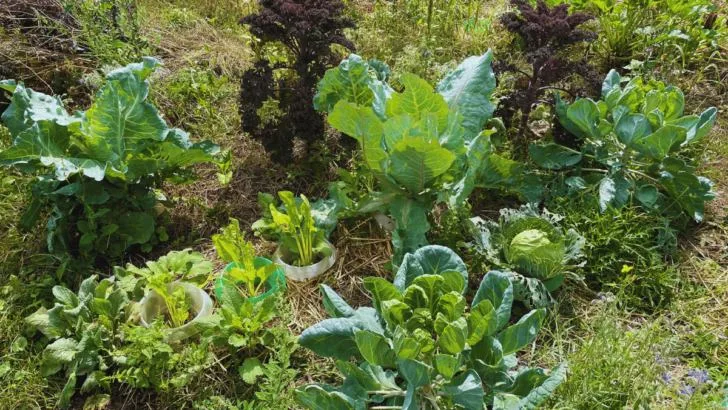Are you looking to plant a fall garden and don’t know where to start? Look no further. From the right plants to the best tips a fall gardener can get. My extensive how-to guide covers it all.
Planting in spring is what most people do. Continuation planting in autumn is what more advanced gardeners do.
But fall gardening is always a gamble. But with the right plan and execution, you can considerably extend your season’s harvest.
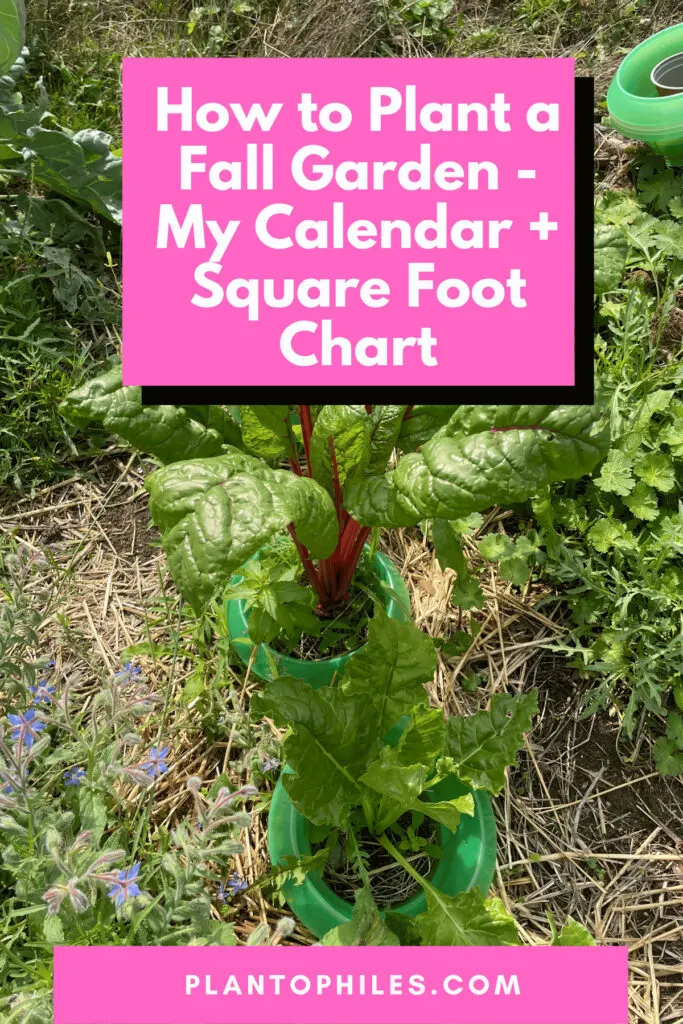
Fall Gardening Tips You Don’t Want to Miss
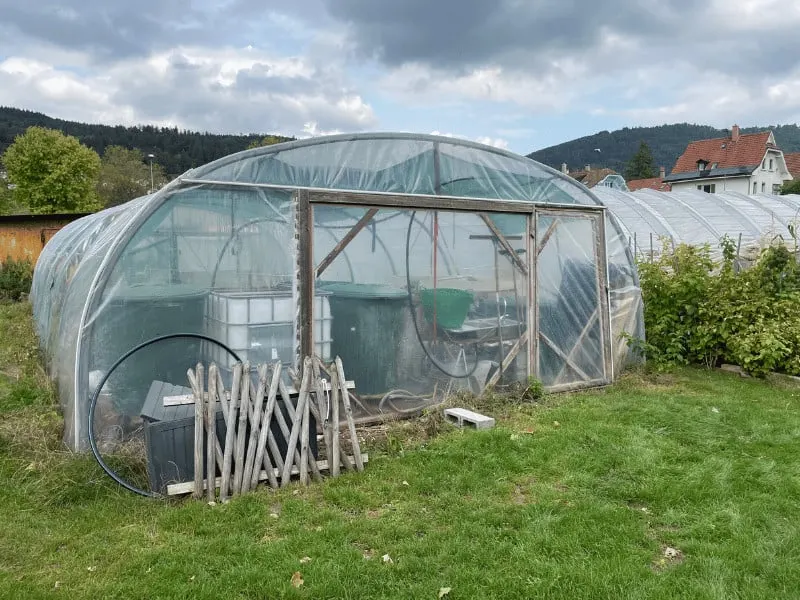
A fall garden needs to be planned well. Germination and harvest times are crucial to harvest crops before the first frost. You need to know your USDA hardiness zones and the vegetables and greens that grow well in autumn. Here are a few helpful tips to get you started.
Have a great plan
When planting a fall garden, planning is everything. The ideal time to plant is August. You will need to know your first fall frost date. This determines how long your crops and vegetables have time to grow. The frost date also determines which crops to plant.
You can use your ZIP code to find your first frost date. It is essential to know how many days it takes for seeds to germinate and the days to maturity for each crop. Only then can you decide what to plant and when it is the right time.
Total time needed = seed germination time + time to maturity. This needs to be smaller than the remaining time before the first frost.
Staggered Planting
Staggered planting of different crops allows you to harvest your greens and vegetables at different times. This way, you can gather a specific vegetable or green multilple times on other dates.
We are a family of four at home and there are just so many cucumbers and cabbages and cauliflowers we can eat at a given time. Of course giving away part of your harvest to friends and family is always an option, but being more self-sufficient for longer is always great.
Start indoors
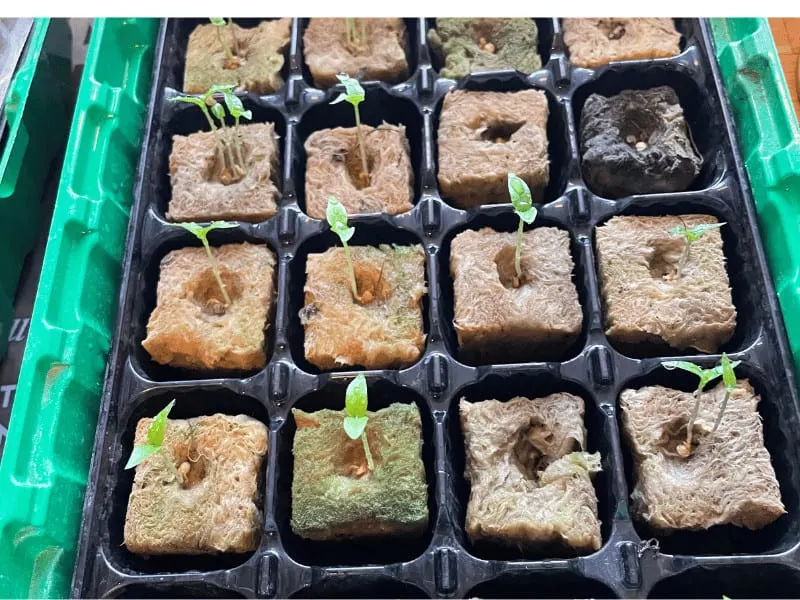
Start planting fall crops and seeds indoors. Plant the seedlings outside 4-6 weeks before the first frost. This way, plants have time to acclimatize before the frost hits.
I always start from seeds and use a humidity tray with a heatmat underneath. If there is space in front of a southfacing window I place my seedlings close. In addition I make use of a seedling grow light. Especially when your plants are in the seedling stage you don’t want to mess up. Leggy plantlets can set you back considerably.
Use Containers
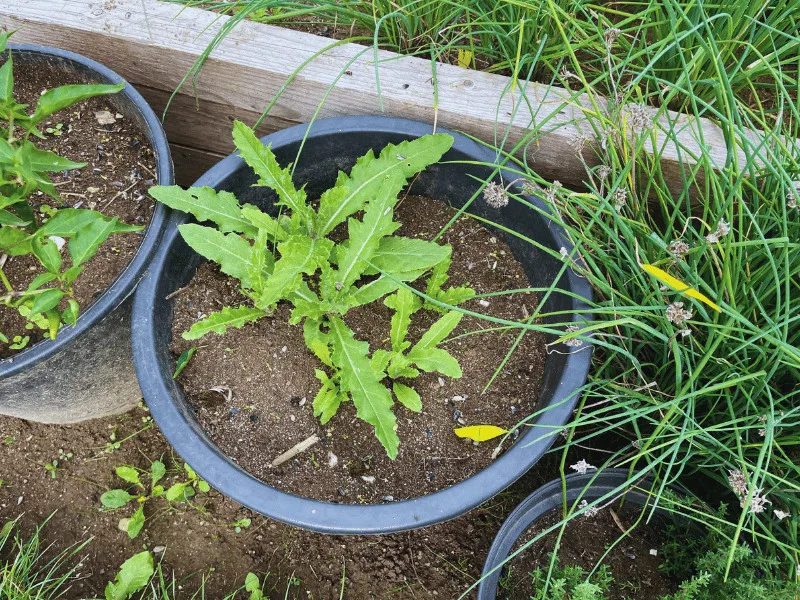
Use containers if you do not want to wait for crops to be harvested. This way, you can already start planting fall crops and then replant once the garden beds or raised beds are ready.
The right soil
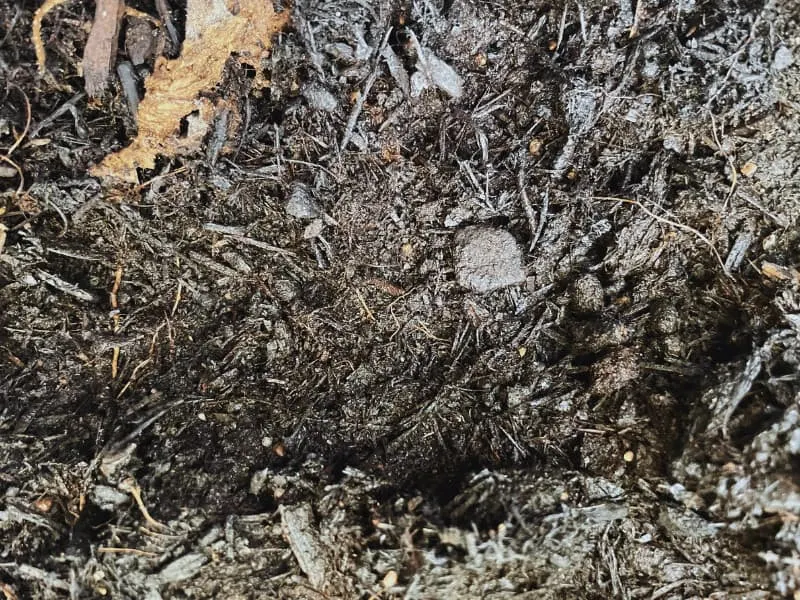
Generally, you will be able to use the soil from summer planting. This soil will already be nutrient-rich in most cases. If needed, you can replenish and add more mulch, compost, and gardening soil.
Choosing the right soil is crucial unless you already have nutrient-rich soil from summer planting. Drainage is an important factor. In colder temperatures, root rot is more prevalent. The soil dries slower during cold temperatures. Cold and wet is a bad combination.
But well-draining is not enough. ML gardeners suggest a soil mix ratio of 30% sand, 40% clay, 20% organic matter and about 10% silt. This is a great general recipe, but you will have to adjust it based on your specifc conditions. Dry areas may need more water retaining components such as organic matter and so on.
To start seeds and seedlings indoors, use a seedling mix. For outdoor planting, use garden soil.
Fertilizer
Use a slow-release fertilizer for your fall planting. Slow-release fertilizer must be applied only once or twice a season.
For plants that I harvest and eat, I only use organic fertilizers. That’s my simple rule.
Use a garden cloth
A garden cloth can help to protect seedlings and cold-temperature crops from the sun. Autumn is unpredictable, and the weather will dictate how hot or cool it will get. Cool-weather crops need cool soil to thrive. Cold-loving seedlings also sprout better this way.
I have a garden cloth over all my beds to protect them from rainfall, wind, and sun rays. The protection is handy from spring to fall.
Use Cover to Extend the Growing Season
You can extend your fall season well into winter using cold frames and row covers. Covers also protect your crops from bad weather and pests.
Protect your Crops
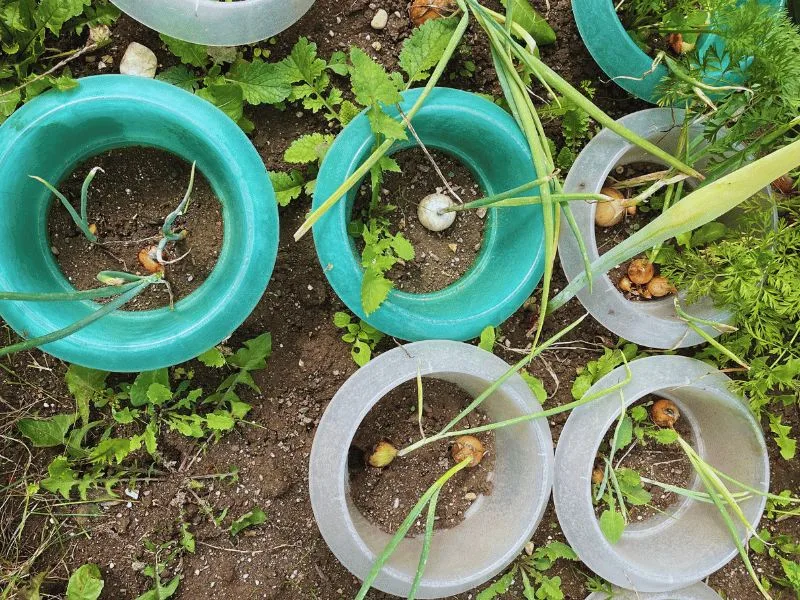
Although there are less pests in autumn due to the weather, you still need to protect your crops from pests such as slugs, and insects such as mealybugs, thrips, scale and so on.
For slugs I use plastic barriers as they work great. Against insect infestations I rely on biological and non-chemical insecticides whenever possible. My best friends are called neem oil, diatomaceous earth and my own mixed pepper liquid created from the summer pepper harvest.
Square Foot Gardening Chart for Fall
Here is a square-foot gardening chart for fall. Each square represents a square foot in your garden. The numbers indicate how many crops of each variety you can plant in each yard. As an example, you can plant eight peas in a square foot, but you should plant no more than one cabbage per square foot. Some crops are larger and need more space to grow.
I have redone this chart multiple times and also took companion planting into account.
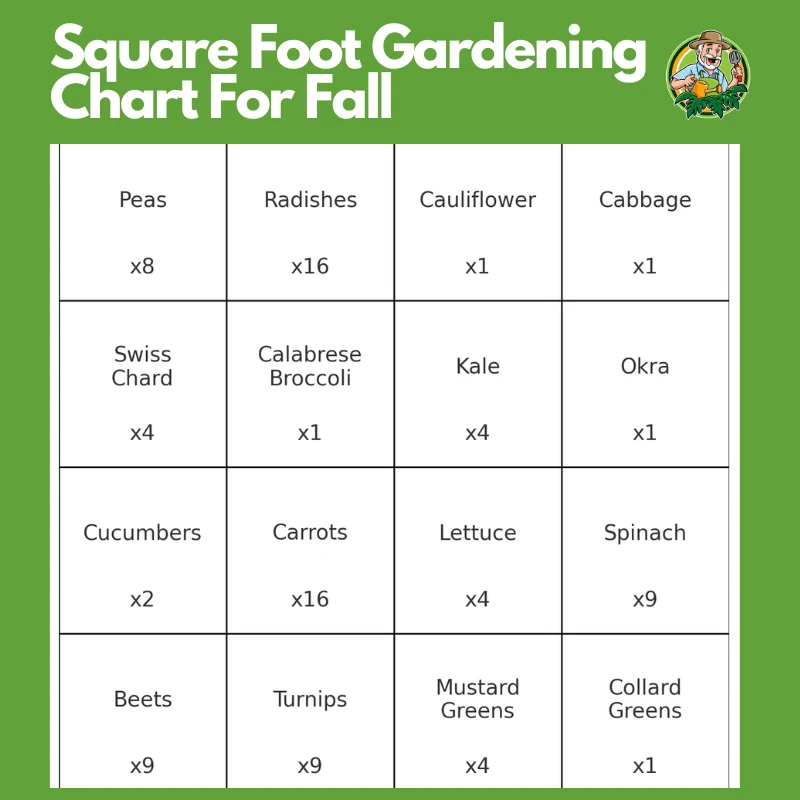
Fall Gardening Chores
There are specific chorese you can do to improve your chances of a great harvest at the end of fall. Here are the most important ones:
Soil Testing
Every gardening season should start with soil testing. Testing the soil lets you know more about the earth’s pH level and nutrient concentrations. There are multiple labs around you that you can send int soil samples to. What you will get back is a report listing the concentration of macro- and micronutrients. Essential macronutrients are Nitrogen (N), Phosphorus (P), and Potassium (K), often abbreviated as NPK.
This allows you to make the necessary adjustments to create ideal crop growing conditions. General recomendations of npk ratios such as use a well-balanced mix or an NPK ratio of 5-10-10 are always just general guidelines. Only a soil test can identify what your soil contains and lacks.
Bed Cleaning & Preparation
After harvesting the crops planted in spring, it is time to clean your garden beds for autumn. This entials removing exising plants that were harvested, removing debrils and freshing-up the soil. Add new compost to your garden beds and replenish it with slow-relase fertilizer.
Most plants do not have to be discarded after a season. Lots of vegetable plants are not just annuals but perennials. While most people tend to compost plants such as tomatoes and chilies, they can actually grow for multiple seasons. I take my tomatoes and chilies inside and continue growing them. In the second or third year they come back even stronger and the harvest increases.
Drench the planting holes
When planting in fall or for any season for that matter you want as little distraction and stress for your plants as possible. Removing plants from a pot and soil is super stressful. Once plants have their roots exposed, your plants fighting for survival and show signs of stress such as yellowing leaves.
Remove the plants from the previous pot gently and make sure to not disturb the roots. it is fine to cut off very long and diseased roots. But do not leave plants exposed for an extended time.
Prepare the planting holes by drenching and watering them the previous day. Your replanted plants will need moisture to take in nutrients and refill lost water during the process. If the planting holes are already watered they will ease the transitiion for your veggies and greens.
Spacing plants
Plant spacing is essential in ensuring all plants have sufficient space to grow. The needed space to grow well varies drastically between plant species. While you can plant up to 16 radishes per square foot, you should plant no more than one cabbage as an example.
In the beginning of my gardening career, I was planting too much always. My goal always is to maximize the harvest with the given space I have. But plants that are shaded by other plants and squeezed will grow slower or not at all. Therefore proper plant spacing is crucial.
Mulching
Mulcing it the extra protecive layer for your gardening soil. It has many benefits and there are different materials you can use. A common one is wood chips or straw. If you have a larger garden beds you can use plastic sheets.
The fall season is often harsher than summer growing and requires extra protection. Mulching prevents erosion, locks in moisture, helps to control soil temperature and thus increases the harvest.
I recommend using 2 inches (5 cm) or mulch right before planting any fall vegetables. If working with fragile seedlings such as lettuce and spinace aim for 1 inch of mulch (2.5 cm).
Beenfits of Fall Gardening vs. Spring Planting
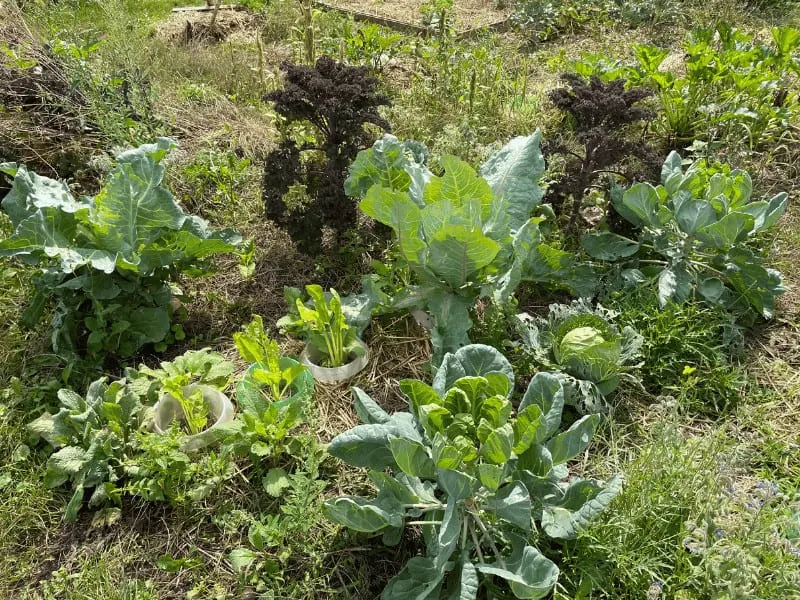
The main benefits of fall gardening vs. spring planting are:
- You need less water
- Fewer weeds are growing in fall
- Fewer pests
- Moderate temperatures
- Less work needed
- A different harvest
Everyone knows about spring planting but not about a second round of planting in autumn. If you love gardening like me, you do it all year round. I start in winter with the first chili and tomato seedlings. Since I am also into houseplants, I practice indoor gardening in winter and try to keep my indoor plants alive.
11 Best Fall Garden Plants – My Planting Guide
There are two types of plants growing well in fall. Fast-growing crops and plants that are frost-hardy. Fast-growing crops need at least 60 days before the frost day.
Frost-hardy plants can withstand freezing temperatures at or below 32°F ( 0°C).
Roots and Refuge Farm says root vegetables and brassicas such as cabbage and greens are well-suited.
days to maturity and days to germination are crucial
1. Peas
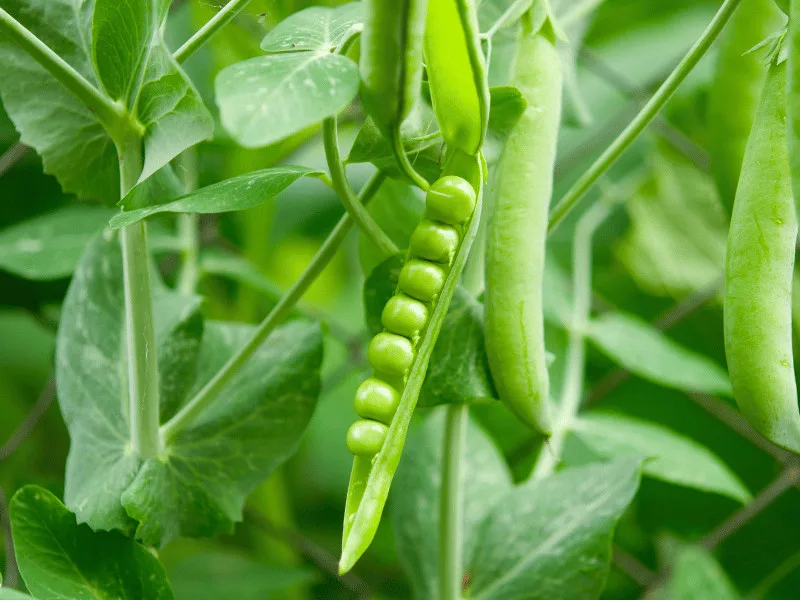
- Days to Germination: 7-14 days
- Days to Maturity: 55-70 days
- USDA Hardiness Zones: 3-9
Peas, also called Garden peas or Green peas (latin: Pisum sativum or new correct name: Lathyrus oleraceus) is a climbing or trailing plant native to Europe. It grows best in temperatures between 50-70°F (10-21°C).
Although peas are not frost-hardy, they can tolerate light frost. They can be planted in summer and then sequentially in autumn. Peas are relatively pest-resistant and low-maintenance. All these reasons make peas an ideal crop for fall planting.
2. Radishes
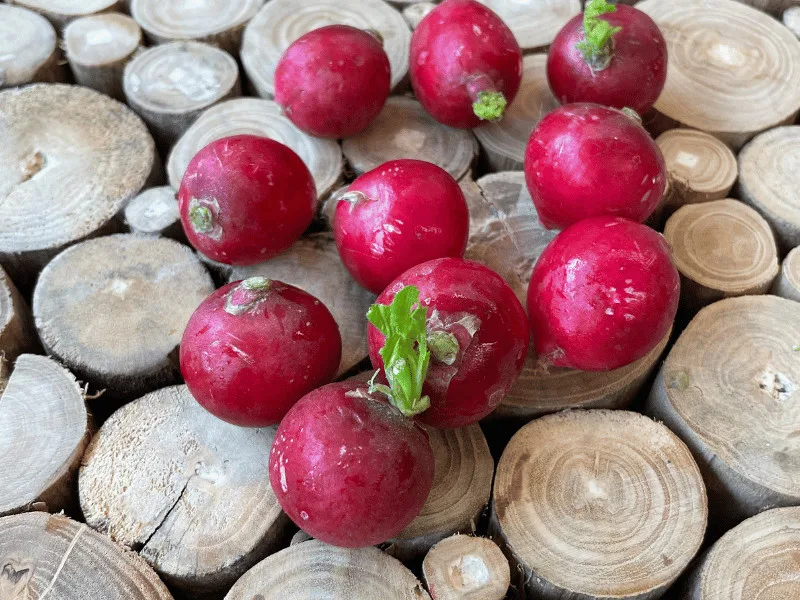
- Days to Germination: 3-10 days
- Days to Maturity: 22-30 days
- USDA Hardiness Zones: 2-10
Radish, or by its scientific name Raphanus sativus are fast-growing plants. They are native to the Mediterranean. Radishes grow red and white roots and green leaves. Radishes mature within 22-30 days and prefer temperatures between 50-75°F (10-24°C).
3. Cauliflower
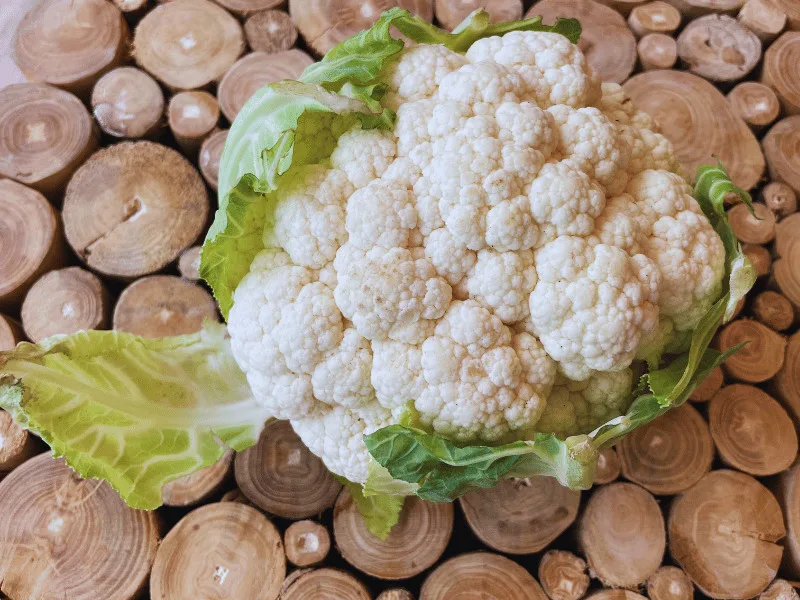
- Days to Germination: 5-10 days
- Days to Maturity: 55-100 days (varies by variety)
- USDA Hardiness Zones: 4-9
Cauliflower, or latin Brassica oleracea var. botrytis is a bushy plant belonging to the Brassicaceae family. It is native to the Mediterranean. Cauliflower takes 55-100 days to maturity, depending on the variety. It prefers full sun and temperatures between 50-75°F (10-24°C).
4. Cabbage
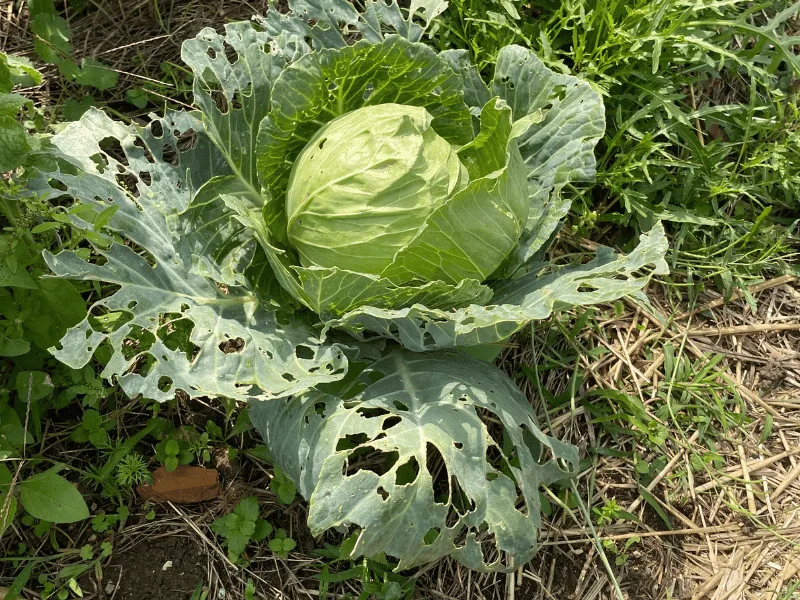
- Days to Germination: 4-10 days
- Days to Maturity: 60-85 days
- USDA Hardiness Zones: 4-9
Brassica oleracea var. capitata or cabbage, is a compact and upright-growing plant native to coastal southern and western Europe. It grows best in temperatures between 55-75°F (13-24°C). Cabbages germinate within 4-10 days.
Although there are fewer pests in autumn, it doesn’t mean there are no pests. As you can see in the picture, my cabbage was attacked by snails. I suggest using natural borders such as diatomaceous earth, and crushed egg shells to prevent slug invasions.
5. Swiss Chard
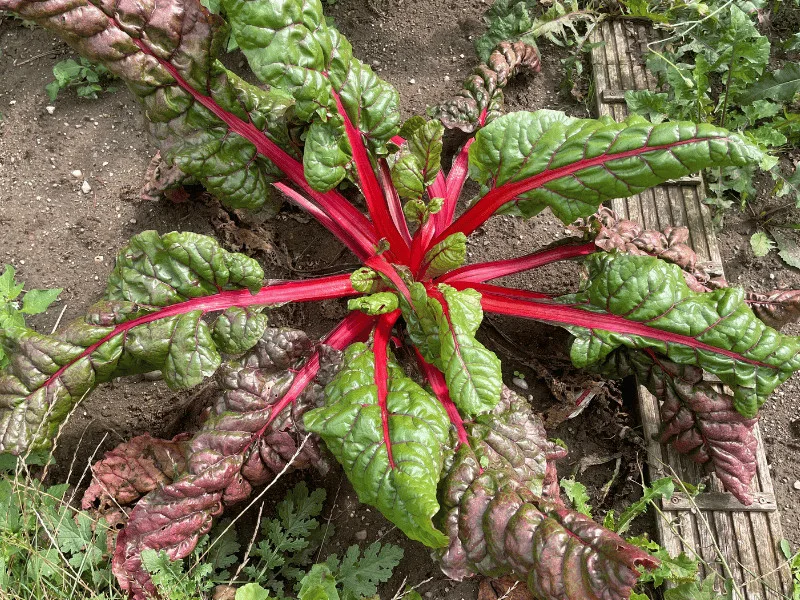
- Days to Germination: 5-10 days
- Days to Maturity: 50-60 days
- USDA Hardiness Zones: 3-10
Swiss chard or beetroot (latin: Beta vulgaris subsp. vulgaris) is a colorful green with red stems. It is a biennial herbaceous plant with edible roots and leaves. Beetroot is native to southern Europe. It reaches maturity within 50-60 days and prefers temperatures between 50-85°F (10-29°C).
6. Broccoli
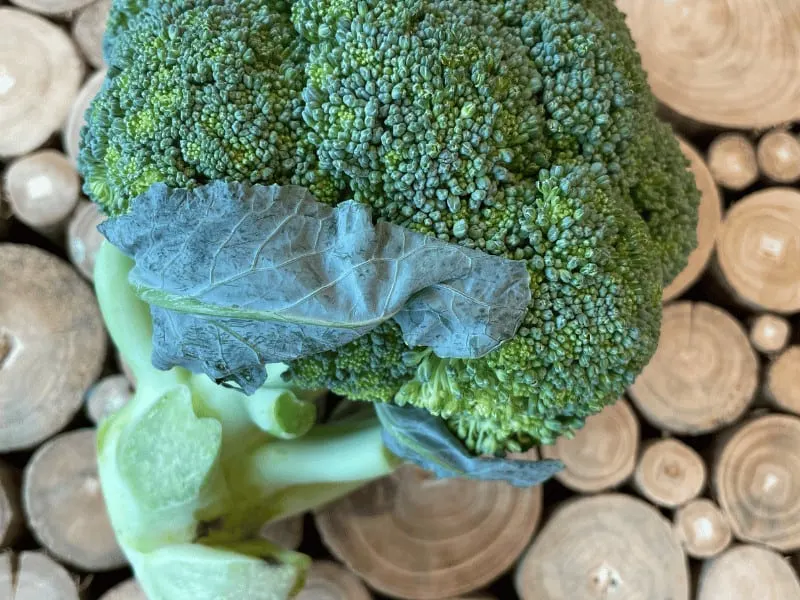
- Days to Germination: 5-10 days
- Days to Maturity: 70-100 days
- USDA Hardiness Zones: 3-10
Broccoli (latin: Brassica oleracea var. italica) is native to the Mediterranean region. It is a cool-season vegetable with big flower heads and tiny green flower buds. The chalks are thick, light green, and white. Broccoli grows well in temperatures between 55-75°F (13-24°C).
7. Kale
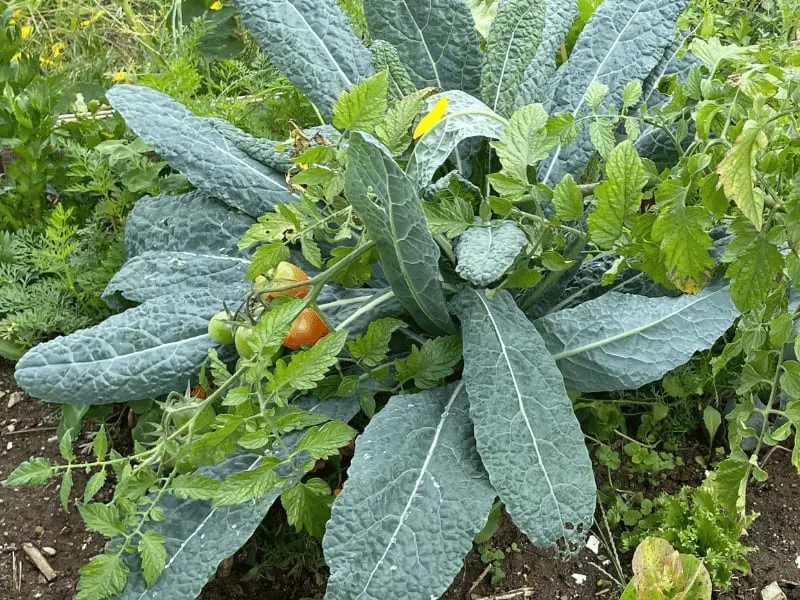
- Days to Germination: 5-8 days
- Days to Maturity: 30-40 days for baby leaves; 50-70 days for full maturity
- USDA Hardiness Zones: 4-9
Kale or grows best in full sun. It should be watered every 5-7 days. Fertilize kale every 7-14 days. The ideal growing temperature is 60-75°F (16-24°C). It, therefore, prefers a warmer minimum temperature compared to other cold-growing vegetables. In hot summer temperatures, kale often bolts and dies. This makes it an ideal crop for fall.
Kale is one of the healthiest greens you can eat. I understand that it is not everyone’s favorite. The taste is intense and healthy. I try to eat as much as possible. Even though the leaves are a bit hard to chew. An alternative is using a juicer so you get most of the vitamins by drinking the kale juice.
8. Okra
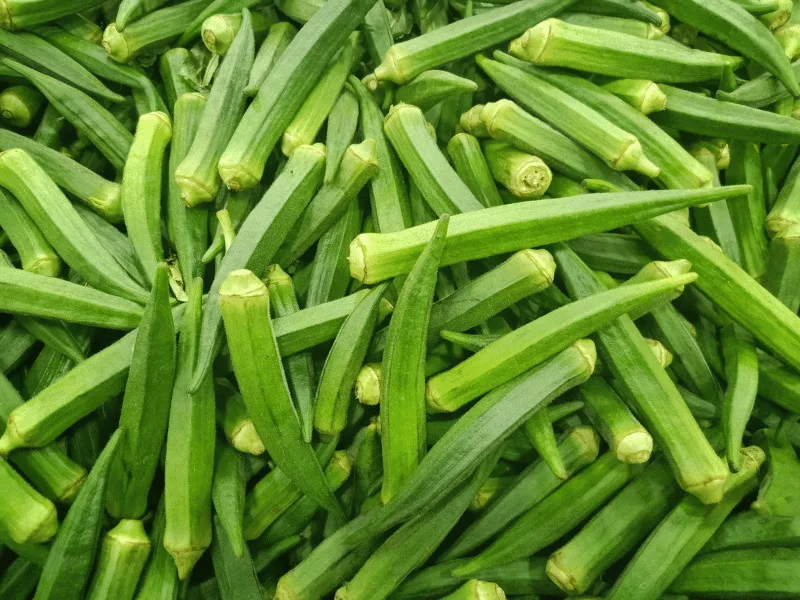
- Days to Germination: 7-14 days
- Days to Maturity: 50-65 days
- USDA Hardiness Zones: 5-11
Okra or Abelmoschus esculentus needs temperatures between 65-85°F (18-29°C). It is a good fall crop if your USDA hardiness zones allow growing it in fall. Plant Okra at least three months before the first frost. Okra has an upright growth form and can be grown from seeds or stem cuttings. Okra needs well-draining soil and full sun to thrive.
It might be surprising that Okra makes for a great fall crop for fall gardening as it is native to tropical Africa and Asia. It can thrive in autumn weather as long as the temperature do not turn very cold. It is not just a crop to grow in the tropics after all.
9. Cucumbers
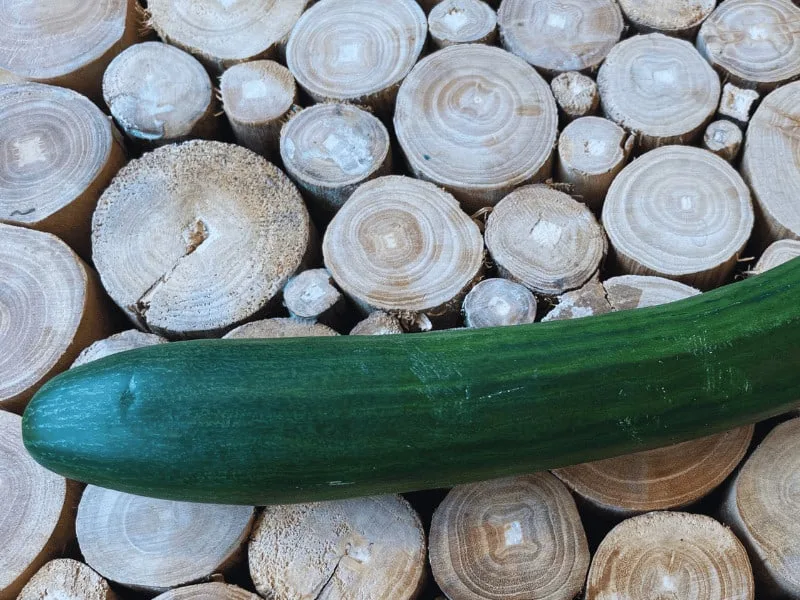
- Days to Germination: 3-10 days
- Days to Maturity: 50-70 days
- USDA Hardiness Zones: 4-11
Cucumbers (latin: Cucumis sativus) is a plant originally native to the Indian subcontinent. It is a climbing vining plant that produces elongated green fruits with high water content. According to Bupa, the water content is 96%. Cucumbers prefer temperatures between 65-85°F (18-29°C). They are best propagated and grown from seeds and seedlings.
10. Garlic (for the next year)
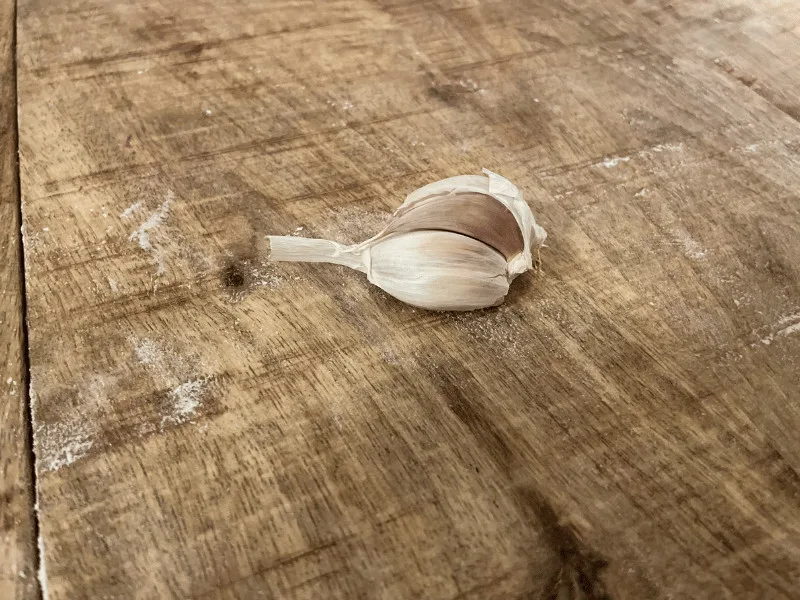
- Days to Germination: Not applicable (planted as cloves)
- Days to Maturity: 180-240 days (6-8 months)
- USDA Hardiness Zones: 4-9
Garlic (Allium sativum) takes 6-8 months to maturity. It is a great fall plant to plant and harvest the next year. Garlic is a bulbous perennial and native to the Meditteranean region. The ideal temperature for Allium sativum is 50-77°F (10-25°C).
Garlic is a vegetable used as a spice. I use garlic almost daily in my kitchen, so I always plant some cloves in the fall for the next year.
11. Strawberries (for the next year)
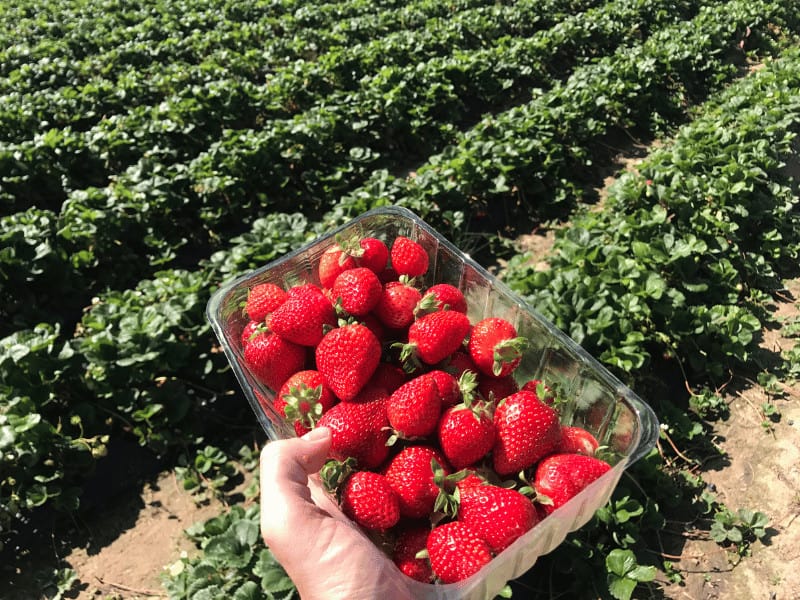
- Days to Germination: 7-21 days (from seed, though usually grown from runners)
- Days to Maturity: Approximately 4-6 weeks after flowering if grown from runners; one year or more if grown from seed.
- USDA Hardiness Zones: 3-10
Fall Planting Calendar
A planting calendar for fall, considering the days to germination and the days to maturity, can provide good estimates of when to plant and harvest certain crops.
Below is my calendar for the nine crops I suggest growing in autumn that I would like to share with you. I assume you will plant all the crops, such as cucumbers, okra, kale, Broccoli, Swiss chard, cabbage, cauliflower, radishes, and peas, at the beginning of August.
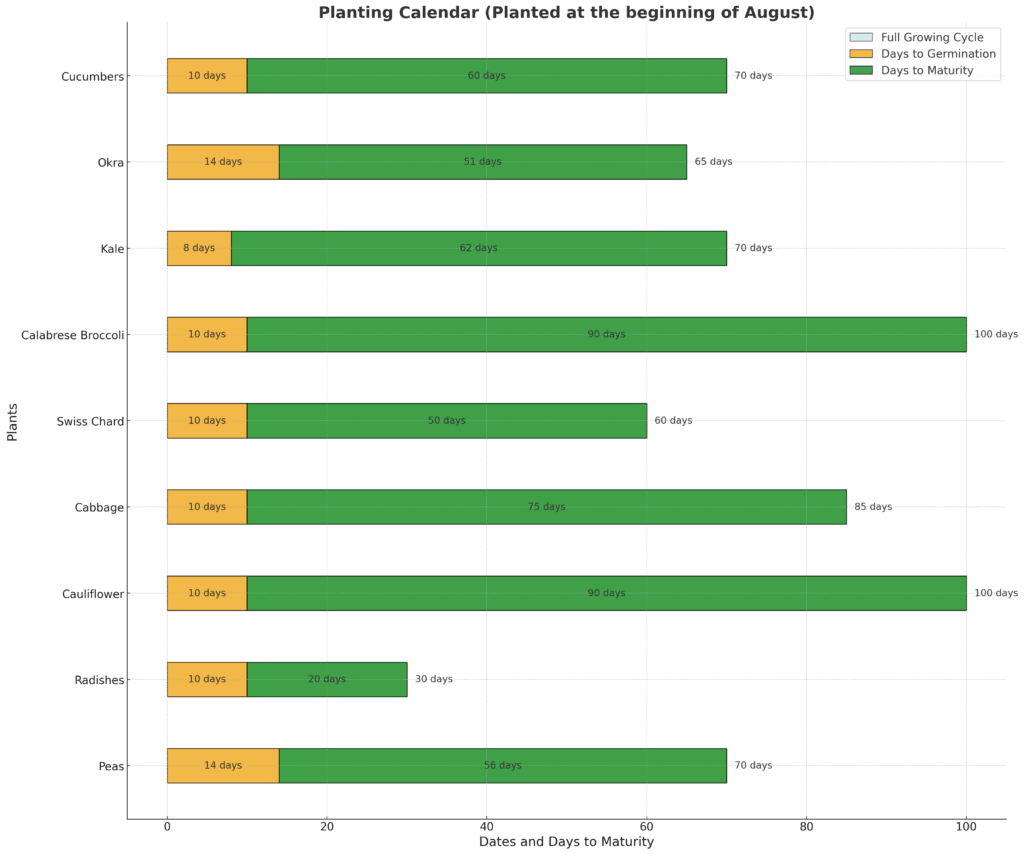
What Gardening Zone (USDA Hardiness Zone) am I in?
The USDA hardiness zone lets you know your growing zone. It is derived from the average minimal winter temperature in the past 30 years for a given location. Why is this helpful? The data the Department of Agriculture collected tells you which plants are likely to thrive in your location. So knowing your hardiness zones is knowing what you can plant outside.
Here is an overview over some of the most requested USDA hardiness zones:
| USDA Zone | Temperature Range (°F) | Temperature Range (°C) |
|---|---|---|
| Zone 5 | -20 to -10 | -29 to -23 |
| Zone 6 | -10 to 0 | -23 to -18 |
| Zone 7 | 0 to 10 | -18 to -12 |
| Zone 8b | 15 to 20 | -9 to -7 |
| Zone 9 | 20 to 30 | -7 to -1 |
| Zone 9a | 20 to 25 | -7 to -4 |
| Zone 9b | 25 to 30 | -4 to -1 |
FAQ
Fall Gardening in Florida
Autumn fardening in Florida needs to take the different USDA Zones into account. Florida spans across USDA Zones 8a to 11a. You can divert it into North, Central and South Florida. The first frost is to set in by the end of fall in the north. Plant typical fall crops. In central Florida where the temperature is more moderate you can plant Carrots, Brussel Sprouts and herbs such as cilantro and parsley. In South Florida you can grow almost anything.
Fall Gardening in Louisiana
Louisiana has a warm climate and a long growing season. It spans across the growing zones Zones 8a to 9a. Some great crops to grow in fall are spinach, broccoli, cauliflower and stawberries.
Fall Gardening in Texas
Texas lies in USDA hardiness zones 6a to 9b. In northern and central Texas take fluctuating temperatures into acount. Focus on more frost-tolerant crops in the north such as kale, spinach and collard greens.
Falling for Autumn
Once you discover the benefits of fall gardening you can naturally extend your gardening season from spring to fall. Not without pitfalls but with the potential to increase the yearly harvest and become more self-sutaining, gardening in autumn is worth a dig.

Daniel has been a plant enthusiast for over 20 years. He owns hundreds of houseplants and prepares for the chili growing seasons yearly with great anticipation. His favorite plants are plant species in the Araceae family, such as Monstera, Philodendron, and Anthurium. He also loves gardening and is growing hot peppers, tomatoes, and many more vegetables.

